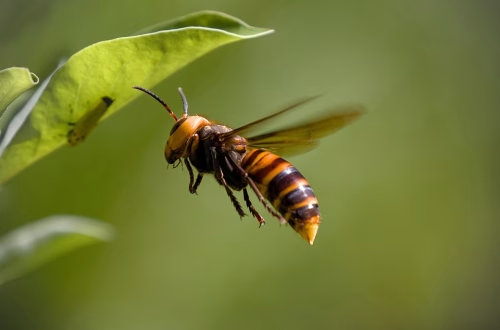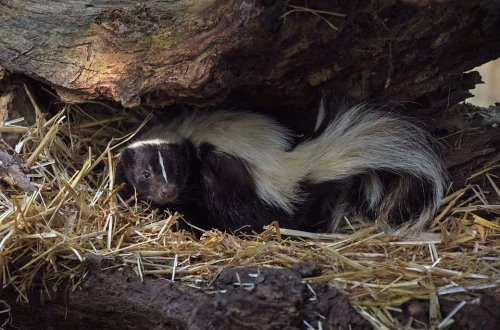Summary:
Commercial rodent removal is a critical aspect of pest management for businesses, ensuring compliance with health and safety regulations while protecting property and reputation. Rodents, such as rats and mice, pose serious risks to food safety, structural integrity, and public health, making timely intervention essential. This article explores the methods, risks, and legal considerations involved in commercial rodent removal, providing actionable advice for businesses to effectively address infestations. Whether you own a restaurant, warehouse, or office building, understanding these strategies can save you from costly damages and potential legal liabilities.
What This Means for You:
- Implement proactive rodent prevention measures to avoid infestations.
- Work with licensed pest control professionals to ensure compliance with state and federal regulations.
- Regularly inspect your property for signs of rodent activity to catch issues early.
- Failure to address rodent problems can lead to severe financial and reputational consequences.
Commercial Rodent Removal Explained:
Commercial rodent removal refers to the specialized process of identifying, eliminating, and preventing rodent infestations in business environments. Unlike residential pest control, commercial rodent removal often requires adherence to stricter health and safety standards, particularly in industries like food service, hospitality, and healthcare. This process involves a combination of inspection, tailored treatment plans, and ongoing monitoring to ensure long-term effectiveness.
Rodents are highly adaptable pests that can thrive in various environments, making commercial properties particularly vulnerable. Their ability to reproduce quickly and cause extensive damage necessitates professional intervention. Commercial rodent removal not only addresses current infestations but also focuses on preventing future occurrences through exclusion techniques and sanitation improvements.
Types of Pest Issues:
Rodent infestations in commercial settings typically involve species like Norway rats, roof rats, and house mice. These pests are attracted to food sources, nesting materials, and sheltered environments, making facilities such as restaurants, warehouses, and office buildings common targets. Each species poses unique challenges—Norway rats, for instance, are adept burrowers, while roof rats are skilled climbers that often nest in ceilings or walls.
State and federal regulations play a significant role in commercial rodent removal. For example, the Food Safety Modernization Act (FSMA) requires food facilities to implement preventive controls against pests. Similarly, OSHA mandates that workplaces remain free from health hazards, including rodent infestations. Failure to comply with these laws can result in fines, closures, or legal action, underscoring the importance of proactive pest management.
Common Pest Control Methods:
Effective commercial rodent removal relies on integrated pest management (IPM) strategies that combine multiple approaches. Inspection is the first step, identifying entry points, nesting areas, and food sources. Exclusion methods, such as sealing gaps and installing rodent-proof barriers, prevent pests from entering the property. Traps and baits are commonly used to eliminate existing populations, with careful placement to minimize risks to non-target species.
Sanitation improvements are equally crucial, reducing access to food and water that attract rodents. Regular cleaning, proper waste disposal, and clutter reduction are essential components of a comprehensive pest control plan. In some cases, electronic monitoring systems are employed to detect rodent activity in real time, allowing for swift intervention.
Risks and Consequences:
Ignoring rodent infestations can have severe consequences for businesses. Rodents are carriers of diseases such as hantavirus, salmonella, and leptospirosis, posing health risks to employees and customers. They can also cause structural damage by gnawing on wiring, insulation, and building materials, potentially leading to costly repairs or fire hazards.
Reputation is another critical concern—rodent sightings can lead to negative reviews, loss of customers, and even legal action. For industries governed by strict health regulations, such as food service, an infestation can result in fines, shutdowns, or permanent closures. Timely and effective commercial rodent removal is essential to mitigate these risks and maintain a safe, compliant business environment.
Choosing a Pest Control Service:
Selecting the right pest control service is vital for successful commercial rodent removal. Look for licensed, experienced professionals with expertise in commercial settings. A reputable service provider will offer customized solutions tailored to your property’s specific needs, ensuring both effectiveness and compliance with regulations.
Consider factors such as the company’s reputation, range of services, and commitment to safety. Ask about their use of eco-friendly products and non-toxic methods, particularly if your business operates in sensitive environments like schools or healthcare facilities. Ongoing maintenance plans are also important, as they help prevent future infestations and ensure long-term protection.
People Also Ask About:
- What are the signs of a rodent infestation? Common signs include droppings, gnaw marks, unusual noises, and foul odors. Regular inspections can help detect these signs early.
- How often should commercial properties be inspected for rodents? Ideally, inspections should be conducted monthly, with more frequent checks in high-risk environments.
- Can rodents cause electrical damage? Yes, rodents often chew on wiring, which can lead to short circuits, fires, and costly repairs.
- Are DIY rodent control methods effective? While DIY methods can address minor issues, professional services are recommended for comprehensive and long-term solutions.
- What is integrated pest management (IPM)? IPM is a holistic approach that combines inspection, prevention, and targeted treatments to manage pests sustainably.
Expert Opinion:
Experts emphasize the importance of proactive rodent management in commercial settings. Early detection and preventive measures are key to minimizing risks and costs. Businesses should prioritize sanitation, exclusion, and regular monitoring to create an environment that is inhospitable to rodents. Partnering with experienced pest control professionals ensures compliance with regulations and protects both property and public health.
Related Key Terms:
- Commercial rodent removal services
- Integrated pest management for businesses
- Rodent-proofing commercial properties
- Pest control compliance in food service
- Rodent infestation prevention in warehouses
- Eco-friendly rodent control methods
- Commercial pest inspection and monitoring
Pest Control Disclaimer
This content is for educational purposes only and does not replace professional pest inspection, treatment, or safety advice. Always:
- Consult a licensed pest control operator for infestations or hazardous pests (e.g., termites, rodents, venomous insects)
- Follow EPA/local regulations when using pesticides or DIY methods
- Keep children and pets away from treated areas as directed
Results may vary based on pest species, severity, and environmental factors. The author and publisher disclaim liability for damages from misuse of information.
*Featured image sourced by Pixabay.com





